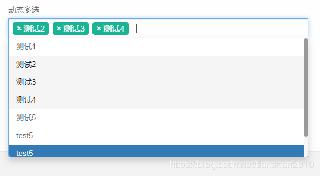Python tkinter之Bind(绑定事件)的使用示例
# -*- encoding=utf-8 -*-import tkinterfrom tkinter import *def left_mouse_down(event): print(’鼠标左键按下’) # 事件的属性 widget = event.widget print(’触发事件的组件:{}’.format(widget)) print(’组件颜色:{}’.format(widget.cget(’bg’))) widget_x = event.x # 相对于组件的横坐标x print(’相对于组件的横坐标:{}’.format(widget_x)) widget_y = event.y # 相对于组件的纵坐标y print(’相对于组件的纵坐标:{}’.format(widget_y)) x_root = event.x_root # 相对于屏幕的左上角的横坐标 print(’相对于屏幕的左上角的横坐标:{}’.format(x_root)) y_root = event.y_root # 相对于屏幕的左上角的纵坐标 print(’相对于屏幕的左上角的纵坐标:{}’.format(y_root))def left_mouse_up(event): print(’鼠标左键释放’)def moving_mouse(event): print(’鼠标左键按下并移动’)def moving_into(event): print(’鼠标进入’)def moving_out(event): print(’鼠标移出’)def right_mouse_down(event): print(’鼠标右键按下’)def right_mouse_up(event): print(’鼠标右键释放’)def pulley_up(event): print(’滑轮向上滚动’)def focus(event): print(’聚焦事件’)def unfocus(event): print(’失焦事件’)if __name__ == ’__main__’: win = tkinter.Tk() # 窗口 win.title(’南风丶轻语’) # 标题 screenwidth = win.winfo_screenwidth() # 屏幕宽度 screenheight = win.winfo_screenheight() # 屏幕高度 width = 500 height = 300 x = int((screenwidth - width) / 2) y = int((screenheight - height) / 2) win.geometry(’{}x{}+{}+{}’.format(width, height, x, y)) # 大小以及位置 label = Label(text=’标签’, relief=’g’, font=(’黑体’, 20)) label.pack(pady=10) label.bind(’<Button-1>’, left_mouse_down) # 鼠标左键按下 label.bind(’<ButtonRelease-1>’, left_mouse_up) # 鼠标左键释放 label.bind(’<Button-3>’, right_mouse_down) # 鼠标右键按下 label.bind(’<ButtonRelease-3>’, right_mouse_up) # 鼠标右键释放 label.bind(’<B1-Motion>’, moving_mouse) # 鼠标左键按下并移动 label.bind(’<Enter>’, moving_into) # 鼠标移入事件 label.bind(’<Leave>’, moving_out) # 鼠标移出事件 label.bind(’<FocusIn>’, focus) # 聚焦事件 label.bind(’<FocusOut>’, unfocus) # 失焦事件 label.focus_set() # 直接聚焦 Entry().pack() win.mainloop()

# -*- encoding=utf-8 -*-import tkinterfrom tkinter import *def keyboard_event(event): char = event.char print(’回车 char:{}’.format(char)) key_code = event.keycode print(’回车 key code:{}’.format(key_code))def entry_enter(event): print(’输入的内容为:’ + entry.get())def shift_f(event): print(’SHIFT + F’) print(event.char) print(event.keycode)def num_lock(event): print(’num_lock’) print(event.char) print(event.keycode)if __name__ == ’__main__’: win = tkinter.Tk() # 窗口 win.title(’南风丶轻语’) # 标题 screenwidth = win.winfo_screenwidth() # 屏幕宽度 screenheight = win.winfo_screenheight() # 屏幕高度 width = 500 height = 300 x = int((screenwidth - width) / 2) y = int((screenheight - height) / 2) win.geometry(’{}x{}+{}+{}’.format(width, height, x, y)) # 大小以及位置 label = Label(text=’标签’, relief=’g’, font=(’黑体’, 20)) label.pack(pady=10) label.focus_set() label.bind(’<Return>’, keyboard_event) # 按下回车 label.bind(’<Shift F>’, shift_f) label.bind(’<Num_Lock>’, num_lock) entry = Entry() entry.pack() entry.bind(’<Return>’, entry_enter) # 按下回车 win.mainloop()

以上就是Python tkinter之Bind(绑定事件)的使用示例的详细内容,更多关于python tkinter Bind(绑定事件)的资料请关注好吧啦网其它相关文章!
相关文章:
1. bootstrap select2 动态从后台Ajax动态获取数据的代码2. 一文读懂Spring Cloud-Hystrix3. Vue项目中数据的深度监听或对象属性的监听实例4. 你好,JOGL - Java与OpenGl的绑定5. python Selenium 库的使用技巧6. Java 汇编JVM编写jasmin程序的操作方法7. python pytesseract库的实例用法8. Javascript如何递归遍历本地文件夹9. 浅谈由position属性引申的css进阶讨论10. SQL+HTML+PHP 一个简单论坛网站的综合开发案例(注册、登录、注销、修改信息、留言等)

 网公网安备
网公网安备